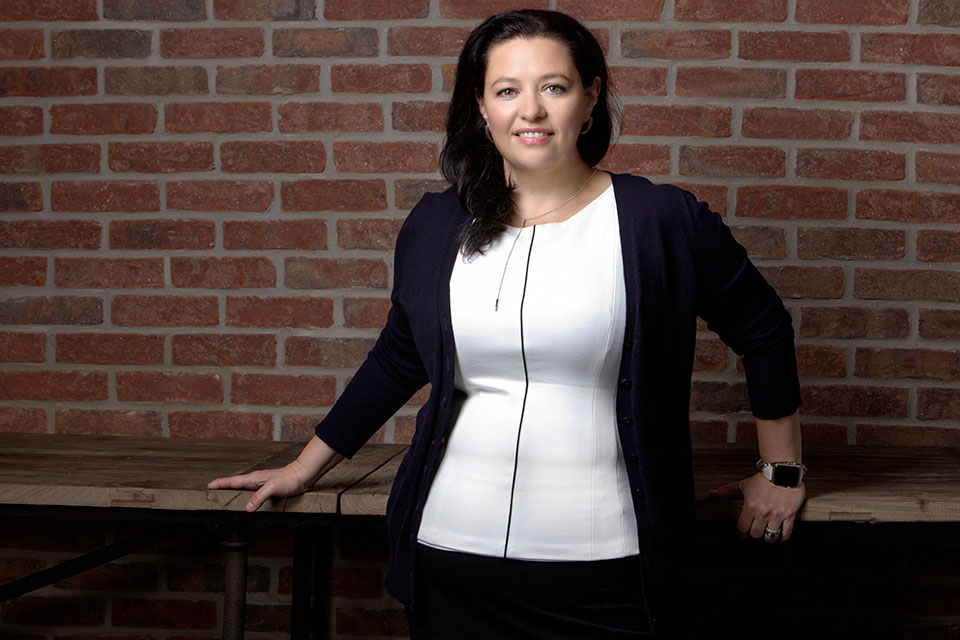Rising to the Challenge: How Women Can Lift One Another Up in a Rapidly Evolving Workplace

This month, we marked the one-year anniversary of the COVID-19 global pandemic. And, as we continue to celebrate Women’s History Month and the many achievements of women around the globe, it’s all the more important to remember that, especially in 2020, those achievements came at a higher cost. Women at every level of the workplace, and out of the workplace, have been disproportionately affected by the COVID-19 pandemic. Since February 2020, women have lost 5.4 million jobs, a 7.1 percent decline in total women employed, as compared to 4.4 million jobs lost by men, a 5.8 percent decline in total men employed. COVID-19 has reversed years of job gains by women in the labor market, which makes offering mentorship and empowerment to women in the workplace all the more important. While we cannot address the whole of the challenge faced by women during the past year, we can recognize the challenges women face as leaders in navigating an even more complex and dynamic professional environment. And we can absolutely challenge the established norms of what it means to be a leader, how our expectations of women in the workforce are changing and what it means to truly support each other and our teams through navigating trials but also seizing opportunities when they arise.
EPAM recently hosted a roundtable panel discussion in honor of International Women’s Day to discuss these recent challenges and lessons in leadership from the last year. I sat down with panelists Ayumi Moore Aoki, Founder & CEO of Women in Tech®; Elena Alikhachkina, Global VP Data and Analytics at Danone; Helen Shan, Chief Financial Officer at FactSet; and Jill B. Smart, President of the National Academy of Human Resources, to explore how best to develop, mentor, and guide successful teams.
It’s clear that mentorship and empowerment are related, but they’re also very different things. The most important thing a mentor can do is simply to listen and be as objective as possible. “Mentorship starts with understanding why it’s needed and learning about the person and their challenges,” said Alikhachkina. “Its importance is to bring people with different experiences and with different minds into the conversation together, building this diverse environment, where leadership and mentoring are happening naturally through collaboration and discussion of the challenges at hand.”
Foundationally, people need a safe space where they can ask for advice, talk about their successes and mistakes, or just vent. “A mentoring relationship is very personal,” added Shan. “It requires authenticity, as well as transparency.” It’s definitely a two-sided coin: As individuals, we have to take responsibility for making sure that we’re building our skills and finding those opportunities. At the same time, we also need to be building relationships, and it really isn’t necessarily mentorships, or counseling of any kind, or advocates. It’s just relationships where we can build very close, functional, loyal interactions with people, regardless of where they are in the hierarchy of an organization.
It is increasingly important, particularly for women, to help and uplift each other. When we see another woman struggling, or maybe they need to ask for help, call her out on that and offer to help. “Empowerment can be more of a challenge because, by default, people in positions to empower others also tend to be very hands-on,” Smart said. “It’s important to set expectations so that people still feel empowered to do their own jobs, but also understand that they’re equally encouraged to ask for help when they need it. To recognize when you need help should be seen as an act of confidence, rather than weakness.”
When it comes to building inclusive teams and inclusive organizations, there are many different facets to consider. It’s not feasible to say that 50 percent of an organization’s senior leaders are going to be women within a certain number of years, if the organization doesn’t have any women in the pipeline. While it’s true that in many parts of the world, women make up more than half of the people graduating from colleges and universities, it’s not enough to simply build from the bottom of the pyramid and move them up. Companies need to do better at addressing, fostering and encouraging those in the middle of the pyramid just as much as they would with recent grads and new hires. Organizations need to establish mentorship opportunities, with senior-level management and create a wide range of career growth opportunities through challenging projects, for both junior and mid-level employees.
Having said all that, the goal should be about more than just having a certain percentage of women in leadership roles, but rather an overarching commitment to inclusivity and equality, which ultimately starts at the top with the leaders — from the CEO down. Inclusivity means so many different things, but the most important aspect is that people feel welcome. It’s even harder to do that now that we’re not physically together, but we still have to make a real effort to create a welcoming environment for our people.
Ultimately, leadership comes down to building trust and inspiring your team. “We have to be able to communicate our vision to the team,” Aoki said. “Once the message is clear, people need to be inspired to follow that message, to believe in it, and to create trust, confidence and motivation. A team that is inspired and passionate is a team that can be effective and create beautiful results. Once they have a purpose and a dream that they feel inspired to realize, they will work to build that dream together.”
No matter the goal, the first step toward getting there is to speak up in a constructive way. For me and for EPAM, this means that we must understand the global context of our organization and the various cultural norms that are part of our workplace, but also part of our communities. Find the right balance by bringing facts to the table about how everyone will benefit from whatever steps your organization can take to address inclusivity, and most importantly, be willing to be part of that solution.
Written by Elaina Shekhter. Follow CEOWORLD magazine on Facebook, Twitter, Instagram, and LinkedIn.
Bring the best of the CEOWORLD magazine's global journalism to audiences in the United States and around the world. - Add CEOWORLD magazine to your Google News feed.
Follow CEOWORLD magazine headlines on: Google News, LinkedIn, Twitter, and Facebook.
Copyright 2025 The CEOWORLD magazine. All rights reserved. This material (and any extract from it) must not be copied, redistributed or placed on any website, without CEOWORLD magazine' prior written consent. For media queries, please contact: info@ceoworld.biz








